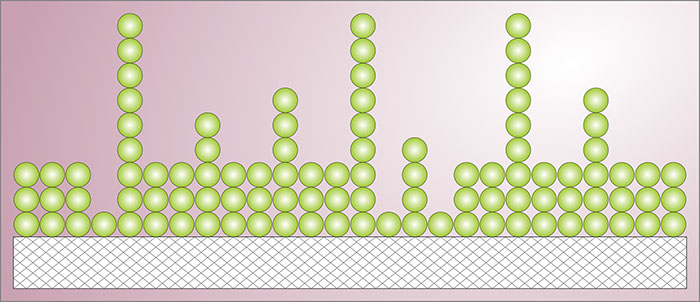Brunauer-Emmett-Teller (BET) Analysis: Measuring Surface Area and Porosity at the Nanoscale
What is BET Analysis?
Brunauer-Emmett-Teller (BET) analysis is a widely used technique for measuring the specific surface area and porosity of materials, particularly in the field of nanotechnology. It is based on the physical adsorption of gas molecules onto a solid surface, allowing researchers to characterize the surface properties of nanoparticles, nanostructured materials, and porous solids.

The BET Theory
The BET theory, developed by Stephen Brunauer, Paul Hugh Emmett, and Edward Teller in 1938, extends the Langmuir adsorption model to multilayer adsorption. The theory makes several assumptions:
- Gas molecules can adsorb onto a solid surface in an infinite number of layers.
- There is no interaction between the adsorption layers.
- The adsorption and desorption rates are equal at equilibrium for each layer.
- The enthalpy of adsorption is equal for all layers except the first layer.
To perform a BET analysis, a sample is first degassed to remove any adsorbed contaminants. The sample is then exposed to a pure gas, typically nitrogen, at a series of precisely controlled pressures below the gas's saturation pressure. The amount of gas adsorbed at each pressure is measured, and the data is used to construct a BET plot.
The specific surface area of a material can be calculated from the BET plot using the following equation:
In addition to surface area, BET analysis can provide information about the porosity of a material. The total pore volume can be estimated from the amount of gas adsorbed near the saturation pressure, while the pore size distribution can be derived from the desorption branch of the isotherm using methods like the Barrett-Joyner-Halenda (BJH) analysis.
Applications in Nanotechnology
BET analysis is widely used in nanotechnology to characterize the surface properties of various materials, including:
- Nanoparticles: BET analysis is essential for determining the specific surface area of nanoparticles, which directly influences their reactivity, solubility, and other properties.
- Nanostructured Materials: The surface area and porosity of nanostructured materials, such as nanotubes, nanowires, and nanoporous solids, can be assessed using BET analysis.
- Catalysts: BET analysis is crucial for evaluating the surface area and porosity of catalysts, as these properties directly impact their catalytic activity and selectivity.
- Adsorbents: The adsorption capacity and selectivity of nanomaterials used in gas storage, water purification, and environmental remediation can be optimized using BET analysis.
Limitations and Advances
While BET analysis is a powerful technique, it has some limitations. The BET theory assumes a homogeneous surface and does not account for interactions between adsorbed molecules. Additionally, the method may not provide accurate results for materials with extremely small pores (< 2 nm) or low surface areas.
Recent advances in BET analysis have aimed to address these limitations. Modified BET equations, such as the Rouquerol equation, have been developed to better describe the adsorption behavior in microporous materials. Combined with other techniques like X-ray diffraction and electron microscopy, BET analysis can provide a more comprehensive understanding of the surface properties of nanomaterials.
Further Reading
The Journal of Physical Chemistry C, Surface Area Determination of Porous Materials Using the Brunauer–Emmett–Teller (BET) Method: Limitations and Improvements
